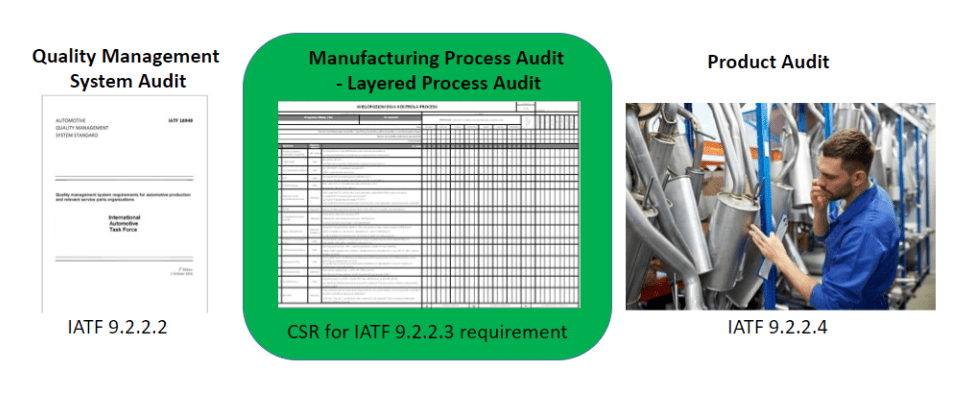Although not explicitly mentioned in the IATF requirements, Layered Process Audit (LPA) is outlined in the Customer Specific Requirements (CSR) for point 9.2.2.3, which pertains to manufacturing process audits (Stellantis and GM).
Even if your organization does not collaborate with these clients, it is worth considering LPA implementation in your production plant due to the many benefits it provides.
What Is LPA?
LPA takes its name from the requirement that multiple “layers” (i.e., personnel at different organizational levels) perform the same audit.
Unlike a finished product audit, typically performed by operators or quality team members, the Layered Process Audit involves designated personnel spanning from production area leaders to top management. This ensures comprehensive coverage and insights into various aspects of the production process.

Scope of LPA
LPAs are qualitative techniques focused on observing and verifying how products are manufactured rather than controlling finished products.
These audits involve personnel not only from quality but also from other departments. They typically include corrective and preventive actions implemented during or immediately after the audit. However, the auditor is not responsible for managing these actions.
Most importantly, LPAs help gain control over processes, reduce error rates, and enhance both work quality and financial performance.
Benefits of Layered Process Audits
Layered Process Audits provide numerous tangible and intangible benefits that contribute to process compliance and improved product quality. Systematic execution is critical to achieving these outcomes, which include:
- Promoting process standardization
- Strengthening key process steps, especially those related to special characteristics
- Ensuring compliance with safety requirements
- Enhancing interaction between plant management and production operators
- Empowering operators to provide immediate feedback (“gemba”) to management and implement Immediate Containment Actions (ICA) when needed
- Unifying process knowledge across operators and all levels of plant management
-

Fig. 2. Enhancing Compliance through Layered Process Audits (LPA).
Key Results of LPA Implementation
Properly implemented LPAs reduce process errors and scrap rates while improving the First Time Capability (FTC) of compliant products. These benefits enhance overall process efficiency, product quality, and cost reduction—key performance indicators for any organization.
Other Areas Addressed by LPAs
LPA verification should not be limited to qualitative aspects. Additional areas validated include:
- Safety: Ensuring employees possess appropriate skills and permissions and comply with safety protocols, such as wearing protective gear (e.g., glasses, ESD clothing, gloves).
- Maintenance for TPM Level 1: Monitoring maintenance activities performed by production employees.
Correct LPA implementation and systematic execution enhance product quality and positively impact customer satisfaction, aligning with IATF 9.1.2.1 requirements.
Free Quality Tools
You can download an automatic, editable Excel form for LPA implementation for free on the Free Quality Tools
Document name: Layered Process Audit – Excel form
Author: Dariusz Kowalczyk


